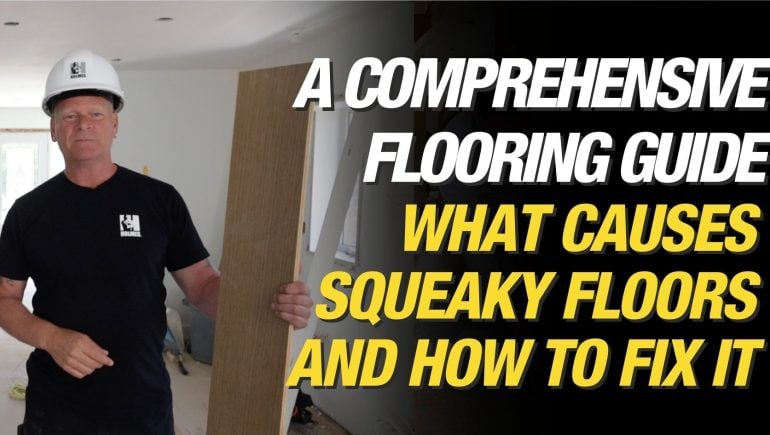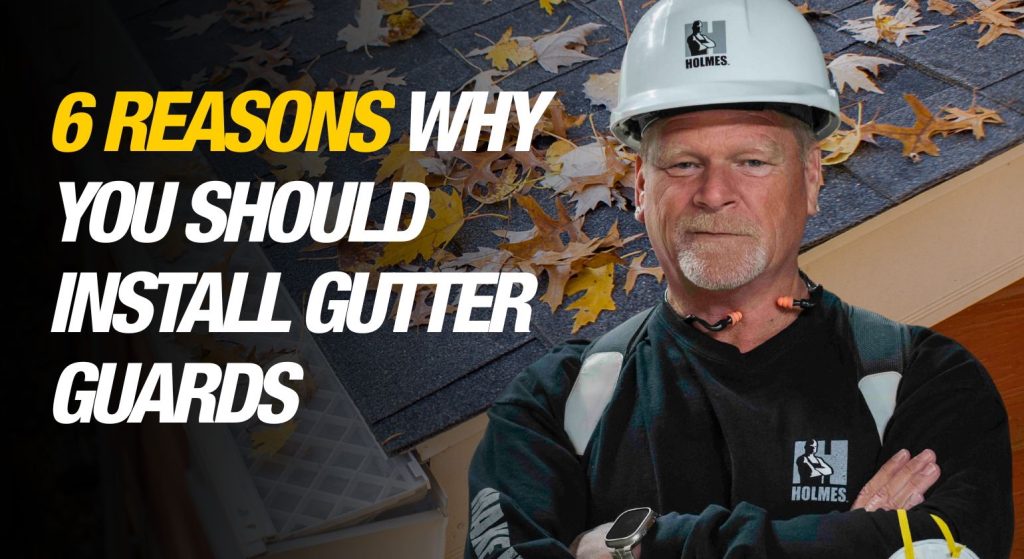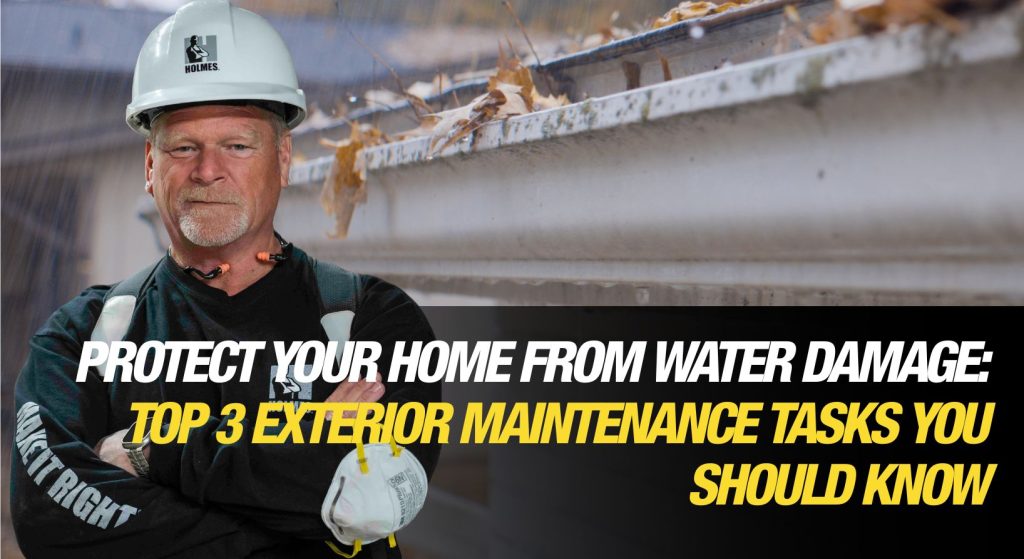Cleaning gutters is one of those chores most homeowners dread—and often put off—but it’s an essential part of protecting your home. Installing gutter guards can significantly cut down on...

A Comprehensive Flooring Guide: How to Fix Squeaky Floors
By Mike Holmes
Mike’s Advice / Flooring
Thursday, April 20th, 2023 @ 12:29pm
Why Are My Floors Creaking? And How Do I Fix Them?
I absolutely hate squeaky floors. They drive me nuts. Creaking and bouncing floors could be a sign that your flooring wasn’t installed properly. So how do you figure out why your floors are creaky? And more importantly, how do you fix a squeaky floor?

If you have a squeaky or creaking floor, it is important to determine the source of the problem before attempting to repair it.
First, let’s start with the WHY.
What Causes Squeaky Floors?
Squeaky and creaky floors are usually related to one of two things: your floor joists, or your choice of subfloor.
You may also have squeaky floors because of the loosening of the hardware holding the floor in place. When nails or screws no longer fit tightly, boards can rub together. That noise you hear is the sound the boards make when they rub together. This can be because of nails or screws that don’t fit tightly anymore.
Sometimes old hardwood floors can start to squeak as they expand and contract depending on humidity levels. If this is the case, you may be able to visually see if your squeaky floors are due to your hardwood expanding and contracting. In the winter, your wood flooring might shrink and leave gaps, and in the summer it might look wavy as the hardwood swells with moisture.
Problem with Your Floor Joists
The squeaks and creaks problem could also be related to your floor joists. It could be that they’ve been spaced too far apart, or they haven’t been properly blocked. Blocking between your joists adds stiffness, preventing them from moving, which means fewer squeaks in your finished floor.
If you have access to the joists from below (like in an unfinished basement), you can add more blocking – assuming there aren’t any ducts or wiring in the way.
Did You Know? Joists are a structure beneath your floor and subfloor.
I had helical piles installed in my house. Helical piles are screwed deeply into the earth, 14 ft in my case. They are screwed into the ground until it’s proven that the area can properly hold the required bearing capacity of the structure. It’s taken the weight off of my second floor completely allowing me to level my floor. That’s Making It Right.
RELATED:
Confused about construction terminology? Read the ABCs of construction
Your Subfloor and Squeaky Floors
The subfloor may be the culprit – do you know what your subfloor material is? Plywood is my preferred material, but even plywood if not properly secured can still end up squeaking. Often, when installing new subfloors contractors will opt to use a nail gun because it’s faster. I don’t like to rush my flooring jobs. Speed isn’t always the best choice.
Quickly firing a few nails into your subfloor, you’ll likely miss the floor joists. If you live in a house with a basement that has unfinished ceilings, you could even go downstairs and be able to see just how many nails didn’t hit the joists.
Without a strong enough connection, the subfloor can pull away from the joists and squeak when you walk over it.
Bad Installation of Flooring
Did you change your flooring recently? If you have recently changed your floor and still have a squeak, whether in the same places or not, it could be due to your subfloor. If you are noticing the squeaking on your new flooring just now, it could be because of a bad installation.
RELATED:
How to Fix Creaking or Squeaky Floors
Fixing creaking and squeaky floors is a common problem for many homeowners, and it can be quite irritating. The good news is that there are a number of options for solving this problem.
Glue It and Screw It (Using Construction Adhesive)
I always go for the “glue it and screw it” method. Whether you go with plywood or oriented strand board (OSB), you glue the subfloor down to the floor joists to make the necessary connection and then add screws to hold the subfloor in place. If you don’t use construction adhesive to glue it, nails can start to pull away, leading to those floor squeaks we hate.
Instead, glue the subfloor down to make the necessary connection, and add screws to hold the material in place. Unlike nails, the screws will keep from coming loose over time.
If you don’t have access to the area beneath the floor, your best bet is to pull up the existing floor, properly glue and screw the subfloor against the joists (and be sure it’s plywood). Unfortunately, it’s not a cheap solution – but it will solve the problem.
Always Level An Uneven Floor
If your subfloor is uneven, and you install your hardwood flooring or tile on top of it, you will likely experience bouncy and creaking floors.

Check the flatness of your concrete by using a level if you have one.
Self-levelling cement is a good alternative for levelling without having to fix the entire structure of the floor. Using a self-levelling floor compound will help ensure that the concrete is completely flat before you lay the tiles or hardwood.
Adding a layer of self-levelling compound to your concrete adds an extra day to your flooring job, but it reduces the chances of problems with your flooring later.
READ MORE:
A squeaky floor is more than simply a discomfort; it might indicate wrong installation or an underlying problem with your flooring structure. If you have a squeaky or creaking floor, it is important to determine the source of the problem before attempting to repair it. Remember putting in the effort to correctly install your flooring will save you time and money down the road. Happy renovating!
READ NEXT:
A Flooring Guide For Your Bathroom Floors
THREE common flooring mistakes and how to Fix Them









